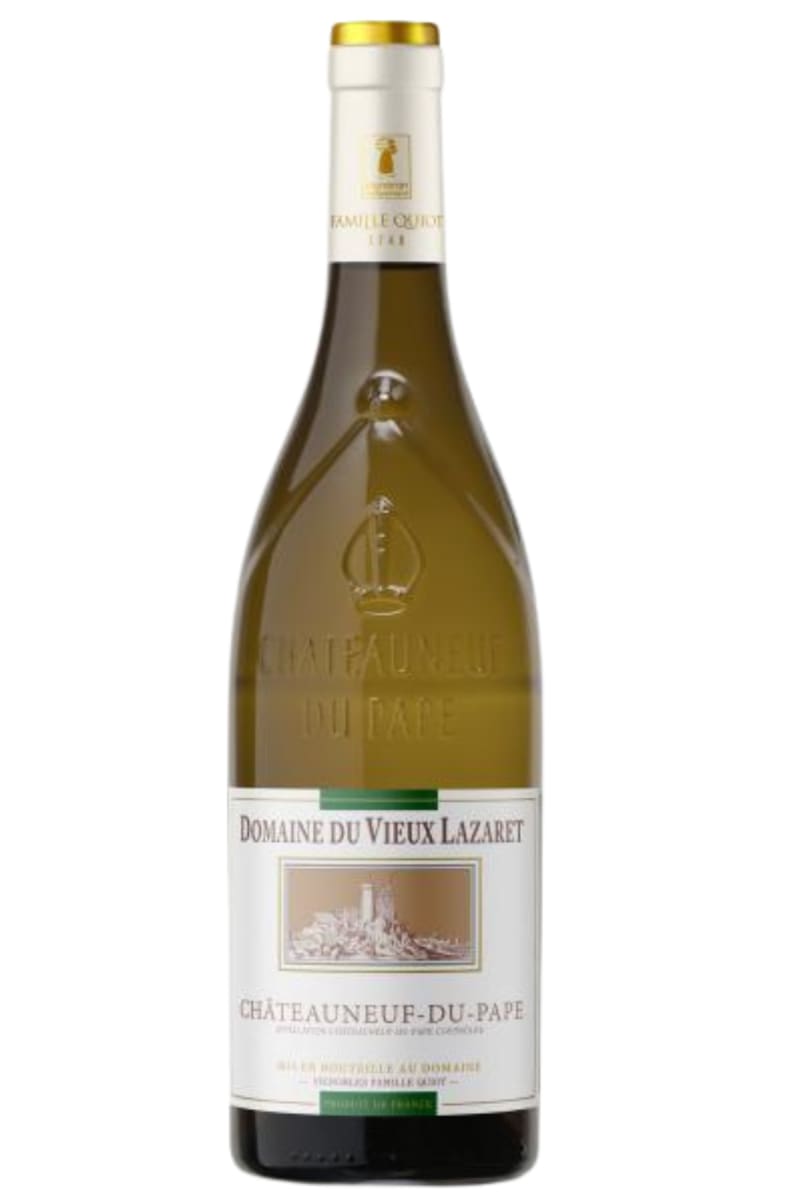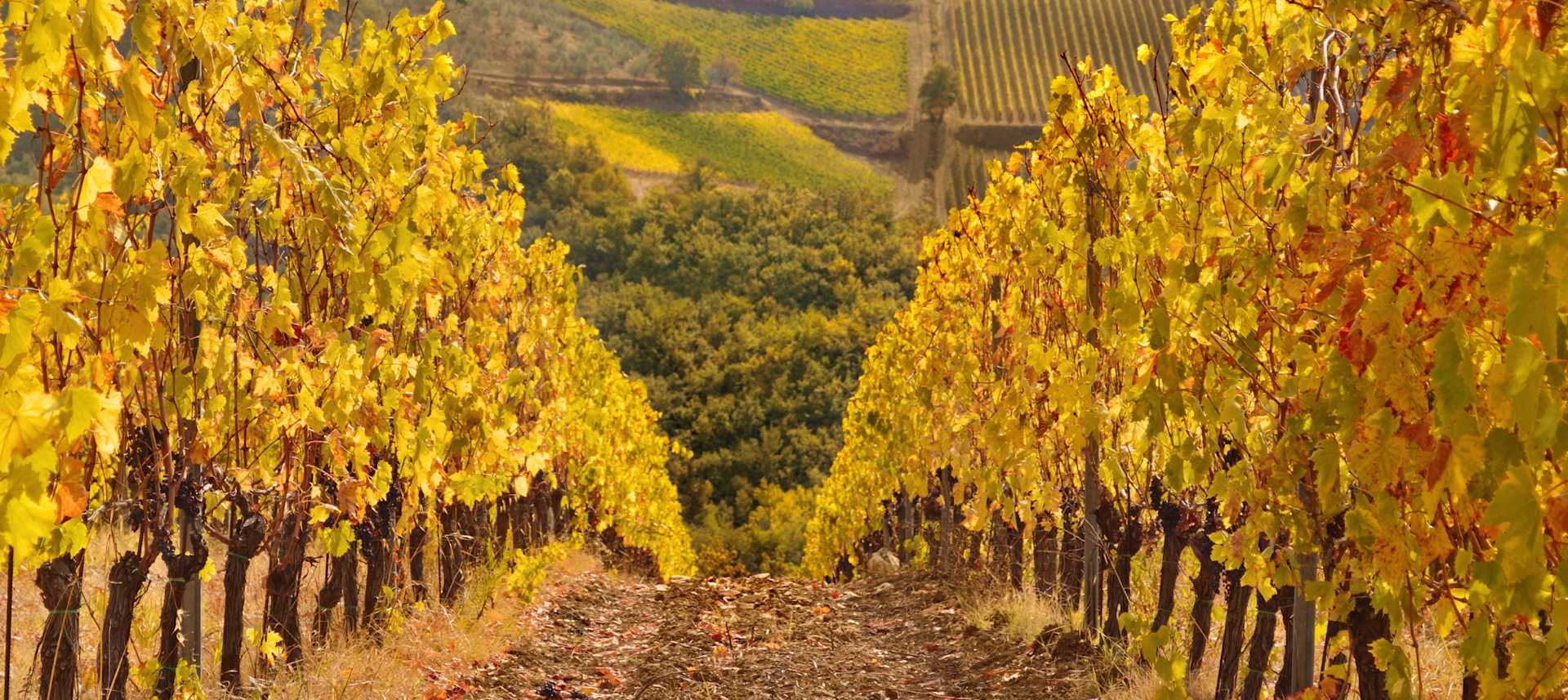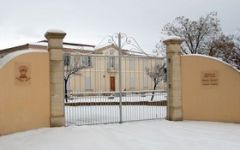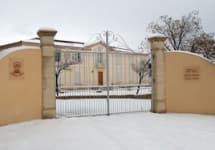Domaine du Vieux Lazaret Chateauneuf-du-Pape Blanc 2023
-
James
Suckling



Product Details
Your Rating
Somm Note
Winemaker Notes
Light yellow gold. Attractive, multifaceted aroma, youthful and moderately full, showing a mélange of quince and fennel complemented by a toasted note. The palate reveals more, notably ripe yellow fruits, spice and herbal highlights. At first open, the wine falls off slightly, then continues to reveal a persistent aromatic conclusion. Well-integrated acidity surfaces at the end together with a mouth-coating texture.
Easily the best wine for pairing with lobster but also delicious with other seafood, puff-pastries, white meats, or goat cheeses.
Professional Ratings
-
James Suckling
A precise, layered and attractive Chateauneuf with aromas of sliced apples, warm herbs, anise, stones and wildflowers. It’s medium-bodied with a succulent development on the palate. There’s a subtle texture, with notes of herbs, flowers, bitter almonds and fresh green pears. Plenty of patina and precision, with a long, flavorful finish.
Other Vintages
2022-
Wine
Spectator
-
Wine
Spectator
-
Wine
Enthusiast -
James
Suckling
-
Wine
Spectator
-
Wine
Spectator -
Robert
Parker
-
Wine
Enthusiast -
Wine
Spectator -
Wine &
Spirits
-
Wine
Enthusiast -
Robert
Parker
-
Wine
Spectator
-
Wine
Spectator


Harvesting of the grapes is done entirely by hand, with very strict selection of the best grapes to enhance the quality of the Domaine du Vieux Lazaret wine. This limits the maximum production, under the A.O.C laws, to 35 hectoliters per hectare.

Full-bodied and flavorful, white Rhône blends originate from France’s Rhône Valley. Today these blends are also becoming popular in other regions. Typically some combination of Grenache Blanc, Marsanne, Roussanne and Viognier form the basis of a white Rhône blend with varying degrees of flexibility depending on the exact appellation. Somm Secret—In the Northern Rhône, blends of Marsanne and Roussanne are common but the south retains more variety. Marsanne, Roussanne as well as Bourboulenc, Clairette, Picpoul and Ugni Blanc are typical.

Famous for its full-bodied, seductive and spicy reds with flavor and aroma characteristics reminiscent of black cherry, baked raspberry, garrigue, olive tapenade, lavender and baking spice, Châteauneuf-du-Pape is the leading sub-appellation of the southern Rhône River Valley. Large pebbles resembling river rocks, called "galets" in French, dominate most of the terrain. The stones hold heat and reflect it back up to the low-lying gobelet-trained vines. Though the galets are typical, they are not prominent in every vineyard. Chateau Rayas is the most obvious deviation with very sandy soil.
According to law, eighteen grape varieties are allowed in Châteauneuf-du-Pape and most wines are blends of some mix of these. For reds, Grenache is the star player with Mourvedre and Syrah coming typically second. Others used include Cinsault, Counoise and occasionally Muscardin, Vaccarèse, Picquepoul Noir and Terret Noir.
Only about 6-7% of wine from Châteauneuf-du-Pape is white wine. Blends and single-varietal bottlings are typically based on the soft and floral Grenache Blanc but Clairette, Bourboulenc and Roussanne are grown with some significance.
The wine of Chateauneuf-du-Pape takes its name from the relocation of the papal court to Avignon. The lore says that after moving in 1309, Pope Clément V (after whom Chateau Pape-Clément in Pessac-Léognan is named) ordered that vines were planted. But it was actually his successor, John XXII, who established the vineyards. The name however, Chateauneuf-du-Pape, translated as "the pope's new castle," didn’t really stick until the 19th century.
